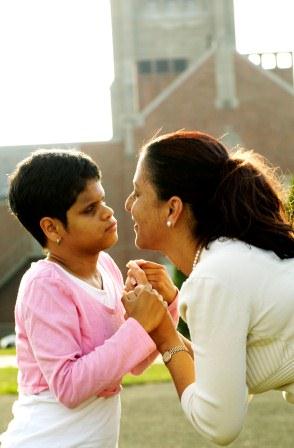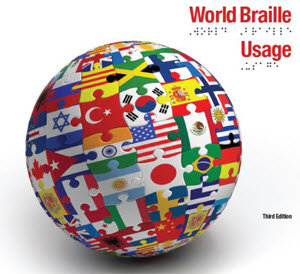Overview of English Language Learners
Is the student already proficient in another language?

Students with limited English proficiency may need additional support to develop English language literacy. Instructional strategies will depend on whether or not the student is proficient in another language already. For example, if a student is able to read and write in Spanish (large print or braille), he or she will have different needs than a student who is not yet literate in any language. In addition, students with deafblindness whose first language is ASL (American Sign Language) will have different requirements. Braille instruction is often based on materials that are in English, and the staff need to be sure that the vocabulary and language which are used in instructing braille are appropriate for the student.
What is the student's cultural background?
Instructional programs must take into account the needs of children with limited English proficiency. It may be necessary to adapt materials to reflect the experiences of children who have been raised in different cultures or with very different backgrounds. For example, a story focusing on a rocket ship or an elephant may have little or no meaning for a child who has had no previous exposure to these things. The culture and values of minority groups must be given respect and understanding in the educational program.
Should ELL students be taught contracted or uncontracted braille?
Students who are learning English as a second language may initially need to use uncontracted braille. In her article Reading for Everyone: Expanding Literacy Options Cyral Miller points out that "these students rely on their knowledge of a written language they have already learned, and may become confused by needing to master new symbols and writing rules in addition to the new vocabulary. For some of these students, alphabetic braille was described as a gateway to literacy; a successful entry point from which they could move on to fully contracted Grade 2 Braille."
Is it better to teach a student braille in her native language or to introduce Unified English Braille (UEB) right away?
- the student's age
- command of English
- language level in native language
- reading level in native language
- other learning difficulties
In general, because literacy is an extension of communication, and we use reading and writing to communicate our thoughts, use the student’s native language first to teach the physical braille code. This way she is using a meaningful language to communicate while mastering the tactile skills of recognizing and producing braille materials. As familiarity with both English and braille increases, the switch from native language to English in written formats will become easier. For students who are learning English, a close collaboration between the TVI and the classroom teacher is needed to ensure that instructional materials match the student’s level of language and literacy proficiency. See Spanish Braille and English Language Learners.
How can we address so many different needs when a student is blind and also an English Language Learner?
It is especially important to work closely as a team when there are so many different specialists involved. For a student who is an English Language Learner with a visual impairment, there may be a TVI (Teacher of Students with Visual Impairments), a Teacher of English as a Foreign Language, a reading specialist, a special education teacher, and a general education teacher all participating on the educational team.
Points to remember:
- The child is a child first! A student who is an English Language Learner and who also happens to be blind or visually impaired may have complex educational needs.
- Someone needs to be monitoring progress. If the student is not making progress, it is essential that all members of the team meet to plan a more effective program that meets his or her individual needs.
-
There should be a primary case manager or person who is responsible for coordinating the pieces of the student's program. This person should pull the team together on a regular basis and be sure that there is good communication among all people working with the child.
Are children who are deaf considered to be English Language Learners?
Some children with deafblindness are fluent in American Sign Language (ASL) and this is considered to be their first language. ASL is a different language from English and, thus, materials in English should be at the appropriate level for the student.
For more information, see ASL/English Bilingual Programming and Early Childhood Education from The Laurent Clerc National Deaf Education Center at Gallaudet University.
Is braille the same in all different languages?
World Braille Usage includes 133 languages that have been transcribed into 137 different braille alphabet and punctuation codes, and represents 142 countries.
What issues are important when teaching students of multicultural backgrounds?
It is important to teach all students with understanding and respect, and this is especially important when working with students of diverse backgrounds. Personnel Preparation programs should seek to include sensitivity and awareness to multicultural issues in the training of teachers. See also Culturally Responsive Literacy Education with Learners Who Are Blind or Visually Impaired.
Additional Resources
- Resources for Teaching English as a Second Language to Learners with Blindness or Visual Impairment
- Teaching an English Language Learner Who Is Deafblind
- Special Education and Testing for Students Who Are Blind/Visually Impaired and English Language Learners

